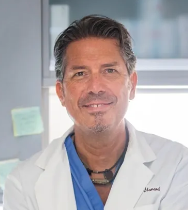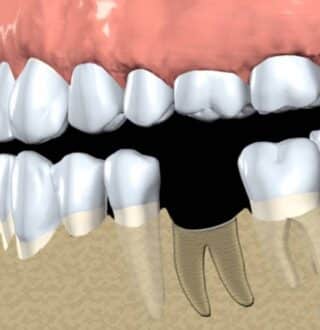
More Dental Health Articles
Exploring Hard Tissue Augmentation in Periodontal Dental Health

Maintaining optimal periodontal dental health is crucial for a beautiful smile and overall well-being. When periodontal disease or tooth loss leads to bone loss in the jaw, hard tissue augmentation becomes essential. This procedure aims to restore lost bone, creating a solid foundation for dental implants or other restorative treatments.
There are various types and options for hard tissue augmentation in periodontal dental health, each tailored to the individual’s specific needs.
- Autografts: Autografts involve taking bone from one part of the patient’s body (usually the hip or jaw) and transplanting it to the affected area in the jaw. This method is highly effective and requires a second donor surgical site, but is considered the gold standard as to inducing bone growth.
- Allografts: Allografts use bone from a donor source, which is processed and sterilized to reduce the risk of infection or rejection. While they eliminate the need for a secondary surgical site, they can only promote a scaffold for bone growth.
- Xenografts: Xenografts use bone from animal sources, typically bovine (cow) or porcine (pig). These grafts are processed to eliminate the risk of disease transmission. They are an excellent option for those who prefer not to use their bone or allografts and are replaced very slowly by one’s own bone which helps with graft volume.
- Synthetic grafts: Synthetic graft materials, such as hydroxyapatite or calcium phosphate, are biocompatible and act only as bone like fillers. They offer a safe and reliable option with no risk of disease transmission or graft rejection.
- Guided tissue regeneration (GTR): GTR involves the use of membranes to separate soft tissue from hard tissue, allowing the body to regenerate bone naturally. This method is more expensive, but offers more predictable amounts of bone growth. GTR (around teeth), GBR (around implants or in areas without either) and with possibly using screws, tacks or stitches to stabilize a barrier membrane that excludes unwanted soft tissue from the graft and maintains a space for regeneration to occur.
- Growth factors that aid and promote wound healing and hard and soft tissue enhancement
- Block grafts (from a second donor site or from a cadaver): A much more invasive surgery when large 3-D amounts of bone need to be replaced
When considering hard tissue augmentation, it’s essential to consult with a periodontist or oral surgeon to determine the best option for your unique case. They will assess the extent of bone loss and your overall health to recommend the most suitable approach.
The success of hard tissue augmentation depends on factors like proper diagnosis, case selection, good surgical technique, proper post-operative care, a healthy lifestyle, and regular dental check-ups. With advancements in dental technology and materials, restoring lost bone and achieving a beautiful, healthy smile is more achievable than ever before.
Hard tissue augmentation is a vital aspect of periodontal dental health. Whether you choose autografts, allografts, xenografts, synthetic grafts, or GTR/GBR, these options can help restore lost bone and provide a solid foundation for dental implants and other restorative treatments. Consult with a dental professional to determine the best option for your unique needs and embark on your journey to a healthier, happier smile.
Other Articles You May Find of Interest...
- Appliances Are In Now: How To Manage TMJ Disorder
- Why The Tooth Fairy Is Very Fun – and Important!
- Let’s Smile Dental’s 7&Up Club
- Strengthening Smiles: Understanding the Importance of Splinting Periodontally Involved Teeth
- Understanding Soft Tissue Grafting: A Key To Periodontal Health
- New Solutions for Dentures and Dental Implants
- Benefits Of Immediate Dental Implants

















